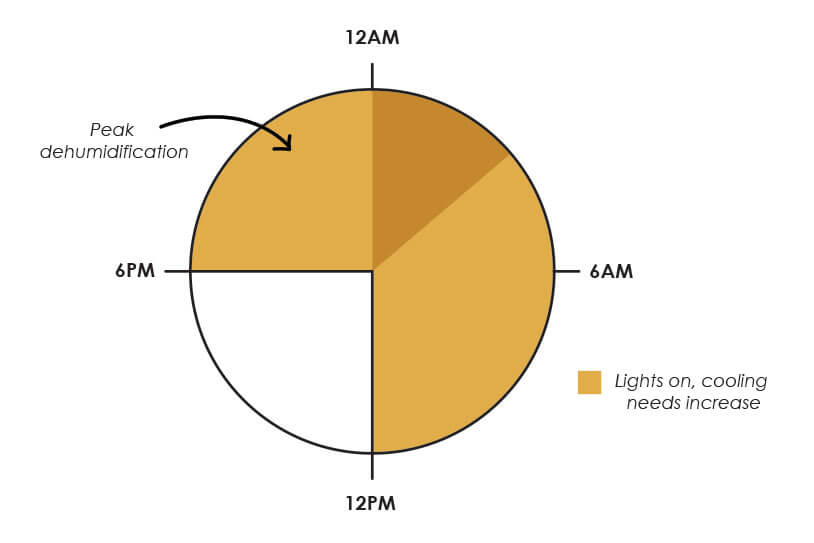Takeaways:
- HVAC power and timing are closely related. (0:33)
- Specific criteria for growing operations will decide HVAC system sizing. (2:00)
- Customization, size, and complexity of an HVAC system will depend on the budget of the farmer. (4:39)
How do we actually select a system?
Sizing criteria: ultimately the goal of HVAC is to control temperature and humidity. There are three questions to consider when doing an analysis for HVAC systems.
- How much heat (sensible load) needs to be removed or added?
- How much moisture (latent load) needs to be removed or added?
- When do we need to remove or add heat and moisture?
These questions will be answered distinctly for different facilities and conditions. For instance, in a vertical operation, you may have the lights on between 6 pm and noon, which means that will be your greatest heat load and your peak cooling load. Your peak dehumidification load will probably be in the middle of the night.

If you are growing in a greenhouse and you’re using natural light, you may use supplemental light in the morning or at night to extend day lengths.This will impact your temperature and humidity throughout the day.
HVAC timing is as important as the sensible and latent loads it will be adding or removing.
What exactly do you need?
These are the criteria that I use for helping people size their HVAC systems.
What are you growing? If you’re growing greens and herbs, the needs of your crop will be different than if you’re growing tomatoes or cannabis.
What type of facility are you growing in? A greenhouse under glass and an insulated warehouse are very different scenarios.
How are you growing (benches, racks, pots, tanks etc)? Understanding the method of irrigation, how you’re growing, and crop density are all factors that affect system sizing.
Where is your facility located? The heat gains are going to be different depending on location. Places like Arizona are going to inherently be much warmer than places like New York.
What temperature/ relative humidity are you trying to achieve?
How much heat is generated by lights, people or other equipment? People often forget that there are motors in automated equipment and computers. Knowing what and where these are will help understand how much heat is being generated.
How much moisture is transpired by plants and evaporated by the irrigation system or aquaponic tanks? Understanding how much moisture there is and where the moisture is coming from as well as how your plants are transpiring will help in an HVAC system size analysis.
Do you have a construction budget? What are your expectations, and what can you afford? This will affect the customization, size, and complexity of the system.
